Retailers and manufacturers embrace gamification to connect clients
You may not notice it immediately, but gamification is more of a part of our daily lives than ever before. What’s gamification? It’s adding elements of game play to actions that doesn’t usually have anything to do with gaming. One example is the speed meters along the roadside that turn green if you’re driving responsibly. Or the cheerful distance indicators that kept you two metres away from other people during the pandemic. Game-based applications like these will continue to become more common. On the road, in your work or learning environment, at the gym, the doctor, and of course, in advertisements.
Gamification is on the rise
Since its emergence in 2003, gamification has been adopted by governments, companies and organisations around the world for goals like promoting innovation, delivering education and influencing behaviour. Today, it is no longer considered to be a trend, but an established value.
Growth Engineering, a British gamification agency, has announced that gamification is on the rise. According to MarketsandMarkets, between 2021 and 2025, the entire gamification market is predicted to grow to a value of 20 billion USD.
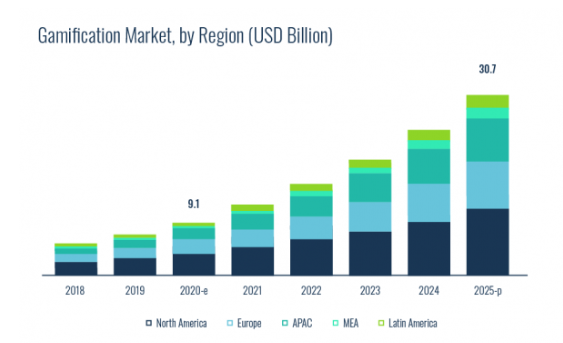
It’s expected that in the next two years, North America will continue to hold the largest market share. This is probably due to the fact that the great majority of its residents – almost 90% – own a smartphone. And of course, smartphones are the largest arena for gamification.
The gamification sector in Europe is expected to grow considerably in the coming years, thanks in large part to the support of regional governments and other important players. Uptake has been increasing, especially in the Benelux region, with more attention being paid to using gamification to alter behaviour in general.
More emphasis on behavioural change and personal growth
One of the most important requirements for good behavioural change is that people are motivated to embrace the new behaviour. And this is where the link with gamification is made!
Different sources, such as Stanford University, show that gamification is one of the most powerful means for instilling a sustainable change in behaviour.
The ‘game of our life’ is called the metaverse!
Gamification will certainly reap enormous benefits from the ‘meta-universe’ or ‘metaverse’. You might say that the metaverse is literally the game of our lives.
The digital world is, in any case, a virtual simulacrum of reality. It is a boundless cosmos of interconnected virtual domains in which you, as an avatar or digital representation of yourself, come together with friends, collaborate with colleagues, buy shoes at your favourite store and, of course, play games. To take part in the metaverse, you need virtual reality (VR) or augmented reality (AR) headsets.
Silicon Valley is already thinking about the possibilities of digital contact lenses and maybe even brain implants to give us access to the metaverse. Or to take part in a future meeting that might be held in Facebook's Horizon Workrooms.
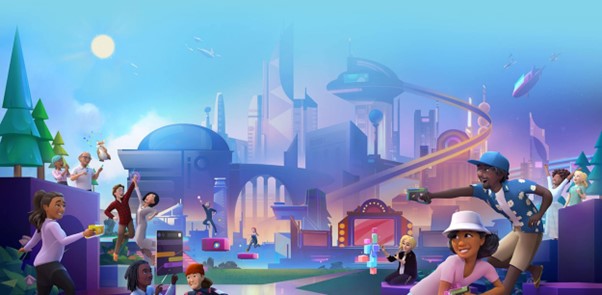
Photo: Meta-horizon
Game-based training and onboarding
The COVID-19 pandemic has made it necessary for companies to use virtual methods to inspire, train and initiate their personnel, with gamification playing a crucial role. How do you remotely stimulate (new) personnel? The use of games offers many benefits here.
Employees might master new skills more quickly, or make a flying start in the study of processes.
By working remotely, teams can sharpen their skills with immediate feedback, incentives, milestones and clarity over their development.
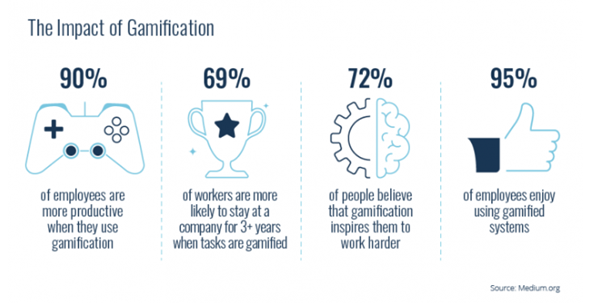
Games as a means of generating user data
Algorithms and data have been used in marketing for years. But how can this be made financially beneficial? By introducing games.
When a person takes part in amusing communications, a game database can collect accurate information about their preferences, actions and reactions to a company, facility or subject.
This particularly deals with the smart interpretation of data. Gamification offers an answer in this situation since the front-end question can be adapted to the precise goals of a particular brand.
Instead of relying on assumptions, marketeers and product designers can be motivated by offering incentives to clients. This would make the process even more intelligent!
Suppose there is an online realm in which buyers can freely wander around. An infinite platform in which they can make their own decisions.
What do they show a preference for? What do they choose? What is given precedence and what is overlooked?
Think about the plethora of statistics, ideas and knowledge that such a game could deliver in the future.
Find out here how HighCo DATA, together with Lays, launched a game to encourage clients to discover three new tastes and win prizes.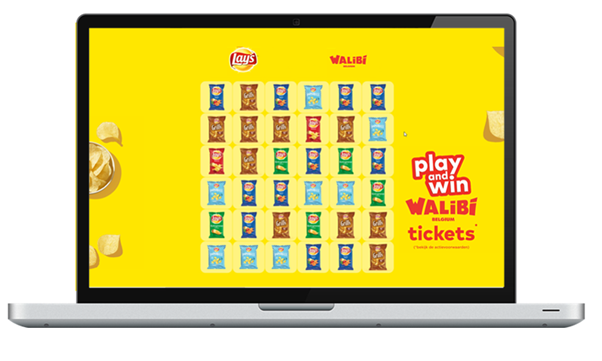
Virtual and real worlds will become more blended with each other
The fate of gamification is intertwined with the expanded digital progress of our world. In the past, you accepted a ‘role’ in a game, but in the future, you’ll use a representation of yourself in a virtual conception of your life. The difference between the virtual and real worlds will become increasingly vague.
Our actions and convictions will be more efficiently transformed into information and more accessible for more people. This should make it easier to bring about changes in behaviour and influence others.
Share this
You May Also Like
These Related Stories
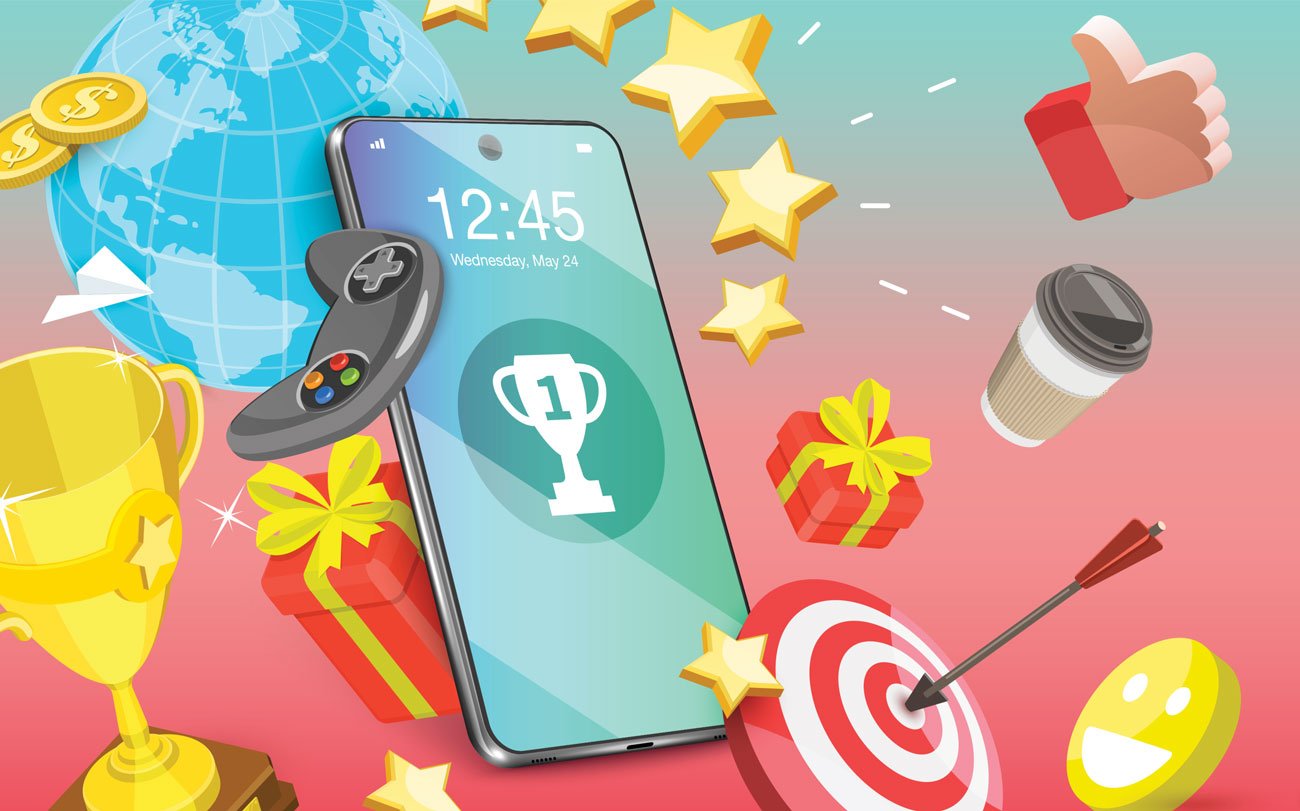
Gamification: the new trend storming the retail world

Out of the (gift) box ideas for competitions with prizes.


No Comments Yet
Let us know what you think